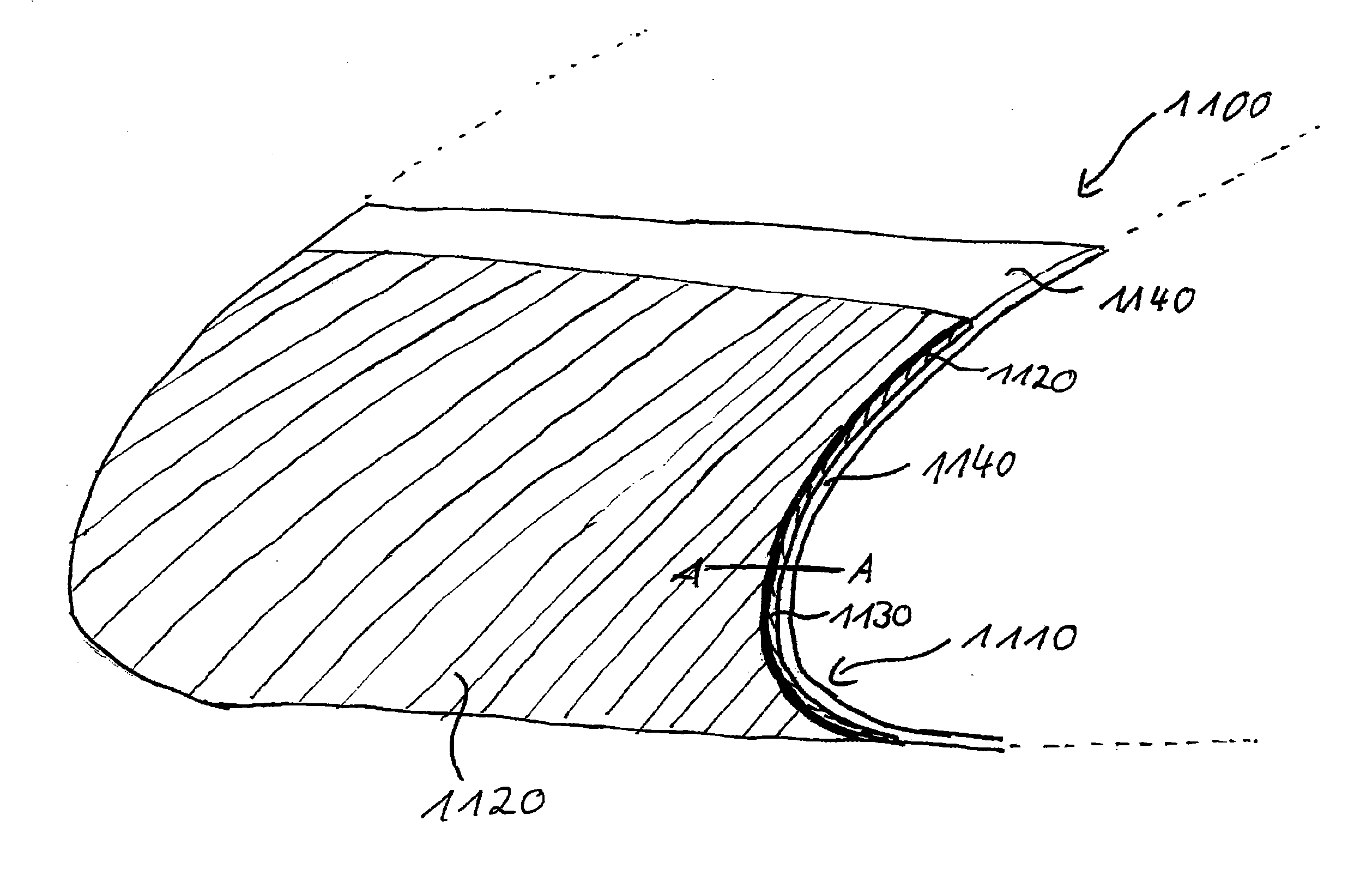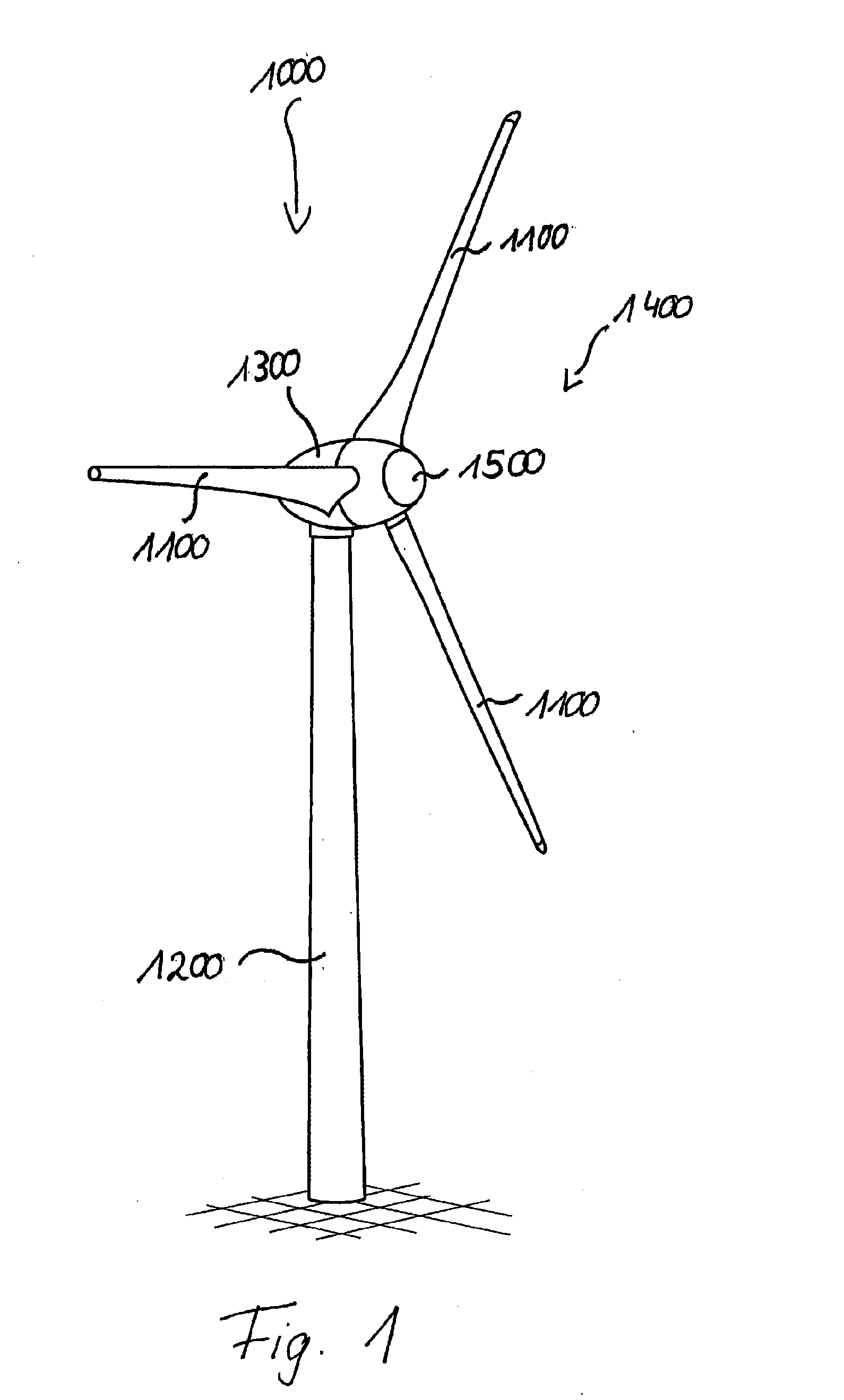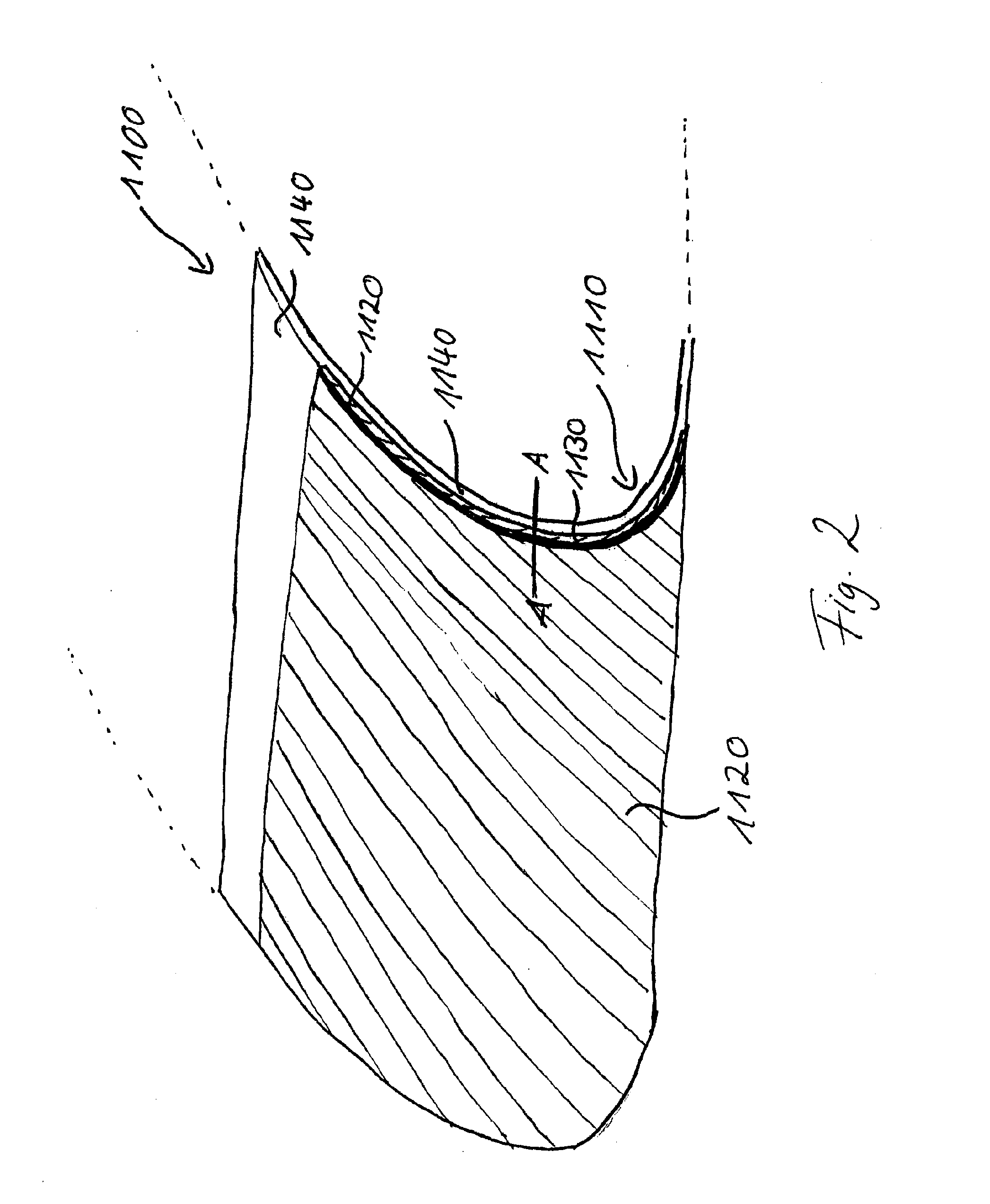Rotor blade element for a wind turbine, rotor blade, and a production process therefor and wind turbine with rotor blade
a technology of rotor blade and wind turbine, which is applied in the direction of machines/engines, other domestic articles, and final product manufacture. it can solve the problems of poor bonding of uhmwpe with conventional adhesives, and the inability of epoxy resins to direct bond to polyethylene, etc., to achieve excellent heat resistance, excellent flexibility, and good suitability for bonding
- Summary
- Abstract
- Description
- Claims
- Application Information
AI Technical Summary
Benefits of technology
Problems solved by technology
Method used
Image
Examples
Embodiment Construction
[0043]FIG. 1 shows a wind turbine 1000 with a tower 1200 and with a nacelle 1300. Arranged on the nacelle 1300 there is a rotor 1400 with three rotor blades 1100 and with a spinner 1500. In operation, the wind rotates the rotor 1400, which thus drives a generator in the nacelle 1300. The rotor blades 1100 of the wind turbine 1000 have a base made of fiber material saturated with curable resin and have locally been coated with a surface foil made of UHMWPE, and between the surface foil and the base there is a bonding layer which in turn comprises a first and a second rubber layer. The degree of vulcanization of the first rubber layer here is different from that of the second rubber layer. This structure is illustrated in more detail with reference to the following figures.
[0044]FIG. 2 shows a rotor blade element 1110 of the rotor blade 1100, namely the leading rotor blade edge. The leading rotor blade edge 1110 has a surface foil 1120. In this embodiment the said foil is composed of ...
PUM
| Property | Measurement | Unit |
|---|---|---|
| velocities | aaaaa | aaaaa |
| pressures | aaaaa | aaaaa |
| temperatures | aaaaa | aaaaa |
Abstract
Description
Claims
Application Information
 Login to View More
Login to View More - R&D
- Intellectual Property
- Life Sciences
- Materials
- Tech Scout
- Unparalleled Data Quality
- Higher Quality Content
- 60% Fewer Hallucinations
Browse by: Latest US Patents, China's latest patents, Technical Efficacy Thesaurus, Application Domain, Technology Topic, Popular Technical Reports.
© 2025 PatSnap. All rights reserved.Legal|Privacy policy|Modern Slavery Act Transparency Statement|Sitemap|About US| Contact US: help@patsnap.com



